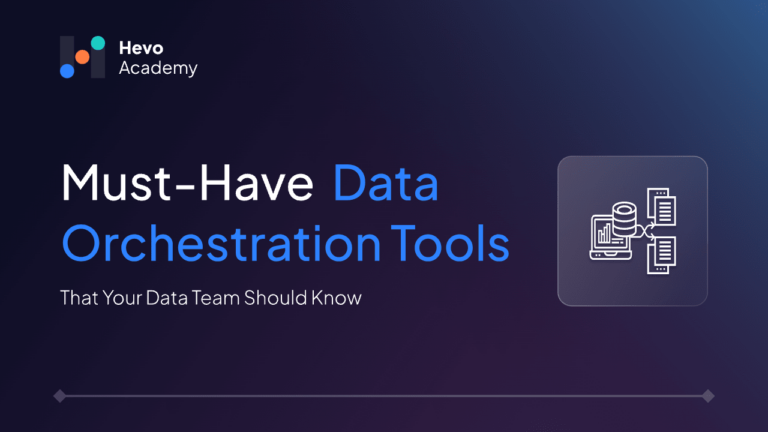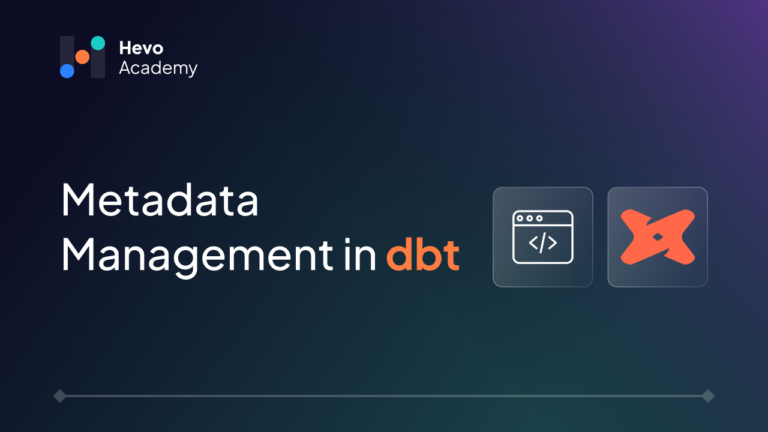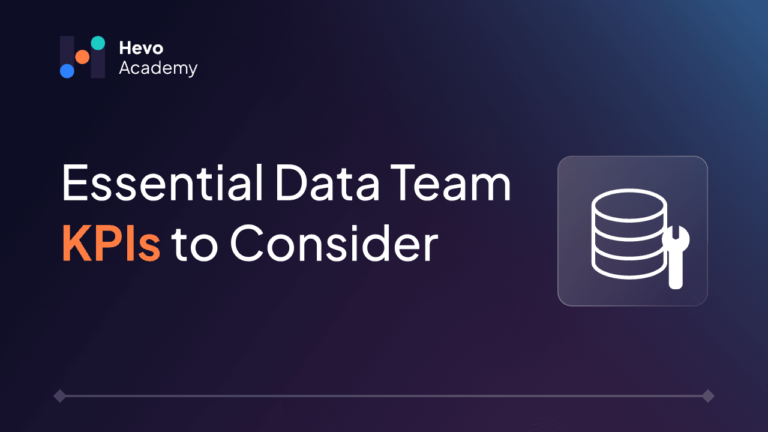“You can have data without information, but you cannot have information without data.” —Daniel Keys Moran, computer programmer and science fiction author.
Table of Contents
Data is no longer just a buzzword—it’s the backbone of informed decision-making in today’s businesses. But to truly harness the power of data, it’s not enough to collect it; you need a well-structured team that can transform raw data into actionable insights. In this blog, we will discuss what a data team structure looks like and how to build an efficient one.
The Importance of a Structured Data Team
Data has an immense impact on business decisions and organizations are already investing a lot in data tools and resources. Data teams are inevitable workforces in today’s data-driven organizations and a strong data team can significantly drive growth.
Data teams are responsible for collecting data, storing them efficiently, building data processing pipelines, analyzing and identifying issues and discrepancies, and generating insights for the future from the organization’s data. Additionally, tracking key performance indicators (KPIs) for data teams helps measure team performance and ensures alignment with organizational goals. With this wide range of tasks, the data teams should be organized properly to get maximum impact. So the question is, “How Should Your Modern Data Team Look?”
“Data science is a team sport. The most effective data teams consist of a diverse mix of skills, perspectives, and roles. When aligned, they can turn data into actionable insights and drive real impact”. —DJ Patil, former U.S. Chief Data Scientist“
A well-structured data team promotes collaboration among team members and with other departments of the organization. It should avoid redundancies in work and should align the objective of the team with that of business goals. The right team structure should also consider the data governance and data quality frameworks to ensure consistency, security, and quality of organizational data.
This blog intends to discuss structuring modern data teams to get maximum impact. We will discuss the evolution of data teams, various roles and responsibilities with a data team, different team structures, and best practices for building and optimizing data teams.
The Evolution of Data Teams
Data teams have significantly evolved aligning with the exponential growth of data and the data-driven culture within organizations. Traditionally, data teams were considered as service providers or order takers who cater to the requests of other team members. Today, they are an integral part of organizations that drive innovations and enable real-time decision-making.
Roles and functionalities
The initial data team’s roles and functionalities were very limited. They were mainly focused on managing databases and ensuring data availability. The key roles included database administrators(DBAs) and IT specialists who managed data storage and retrieval. The team followed a centralized structure and was mostly within the IT department.
Gradually, organizations introduced dedicated data analyst roles. They focused on generating insights from data rather than just managing it. The role of data scientists began to emerge. They focused on more advanced analytics, including statistical modeling and machine learning.
Today, data teams are diverse and crossfunctional, with specialized roles such as data engineers, data scientists, data analysts, machine learning engineers, data quality engineers, and data product managers. They are responsible for collecting, storing, processing, and generating insights from data, which organizations then use to make decisions.
Tools and skillsets
The tools and skillsets required by data team has also evolved significantly. Traditional data teams relied on relational databases, SQL, and basic reporting tools like spreadsheets. The use of advanced analytics was minimal.
Slowly databases evolved into non relational databases to accommodate the large volume and variety of data including semistructured and unstructured data. The distributed processing frameworks like Hadoop and Sprak gained popularity due to their parallel processing capabilities.
Then, business intelligence(BI) tools were introduced, focusing on more interactive and user-friendly reporting. Then came the artificial intelligence and machine learning waves. ML and AI’s popularity and wide acceptance to generate insights from large data resulted in scalable infrastructure requirements. Cloud platforms like AWS, Azure, and Google Cloud came into the picture and have revolutionized data storage, processing, and analysis, making it more scalable and flexible.
Modern data teams need a wide range of skill sets, BI tools, computational resources, and infrastructures, including GPUs and cloud data warehouses. Data tools will keep on changing according to new requirements and usecases. With the rapid emergence of new tools and intense competition among BI platforms, adaptability—particularly the ability to quickly learn and implement new tools—has become a critical skill for modern data practitioners.
Data Processing
Traditional data teams worked on batch processing and periodic report generation with limited analysis capabilities. Data processing and analysis were done with limited tools and infrastructure, often requiring extensive manual intervention.
Today, the data teams are working in real-time processing and dashboards with advanced analytics. Data pipelines are automated, reducing manual interventions and ensuring data consistency. Modern data pipelines and dashboards are dynamically updated with the most current data.
Data Team Roles and Responsibilities
A successful modern enterprise data team contains diverse individuals with varying skills and expertise. Typically, these teams include three core roles: data engineers, data scientists, and data analysts. However, many other roles also exist, which vary based on organizational goals and requirements.
Data engineers
Data engineers are core members responsible for building and maintaining the data infrastructure necessary for ingesting, storing, and processing data. Their role is critical in maintaining the pipeline that feeds data to analytics and data science teams.
Data engineers play a critical role in modern data teams as organizations add more layers of tools and manage data on various platforms. Their skillsets include Python, SQL, ETL tools, big data frameworks like Apache Hadoop, Spark, and Kafka. Expertise in cloud data storage and processing services is also mostly desirable.
Many also have a misconception that AI can prepare data for AI and data engineer roles will be obsolete. But the reality is that while AI can accelerate the process, data engineers still need to get that data in shape before it reaches the AI processes and models, and we see significant results. At the same time, AI tools can accelerate and scale the data engineering work.
Data scientists
Data scientist is a relatively new role in a data team. Data scientists are responsible for extracting insights from the data and providing solutions to business challenges using the insights generated. They play the front-end role in data while data engineers can be considered as back-end.
They use machine learning, deep learning, and artificial intelligence tools and techniques to improve the business process. They build models and simulations that can predict the future outcomes of business decisions. They are also responsible for data mining and data exploration to identify patterns and trends in data.
Data scientists use programming languages like R and Python for data analysis, exploration and model development. They require strong math skills as well as expertise in statistical analysis and ML.
Data analysts
Data analysts use data to answer business questions and provide insights to an enterprise across all departments. The role of data analysts involves understanding business objectives, KPIs, and using statistical tools to interpret data sets. They are the key communicators, transforming raw data into a language that business leaders can comprehend and act upon.
Data analysts are experts in using data for reporting and analysis. This role needs strong SQL skills and proficiency in data visualization tools, such as Tableau or Power BI. Data analysts are expected to have domain knowledge and can also act as subject matter experts.
Specialized Roles
- Database administrators/Data warehouse administrators/ Data architects: These specialized roles align closely with data engineers and are responsible for designing and implementing data architectures. They ensure that data storage is efficient and scalable to meet organizational requirements. They also optimize database performance, manage data integration, and ensure data availability and integrity across the organization.
- BI developers/ BI analysts: These roles align closely with data analysts and are responsible for creating and managing business intelligence tools and analytics platforms.
- Compliance and Security/Data Governance Teams: The Security and Compliance team safeguards the assets, data, and reputation of a business by ensuring a secure and compliant environment that follows industry regulations and best practices. They manage data access, prevent breaches, identify risks, and align operations with legal requirements.
- Data Quality Engineer: A DQE ensures data accuracy, completeness, and reliability by developing metrics, testing for errors, and implementing quality tools and processes.
- Cloud engineer: These professionals have expertise in cloud platforms and digital transformation, enabling organizations to leverage cloud technologies for better scalability, flexibility, and cost-efficiency.
Management Positions
In addition to the aforementioned job positions, data teams in larger organizations typically have a management or leadership position responsible for defining and aligning with data strategy. Some positions within the management roles include data engineering manager, data engineering director, chief data officer, etc.
Data Team Structure
Companies adopt different team structures based on their size and specific needs. Some follow a centralized approach, which provides a holistic view across departments, while others prefer a more distributed approach, with team members integrated into various departments. This allows a deep understanding of department-specific requirements and issues.
Centralized
A centralized team provides more control, allowing for consistent standards and quick decision-making. It is typically observed in medium-sized organizations and start-ups. Here, the team acts as a separate unit of the company, where all members report to the same hierarchy and work on unified Objectives and Key Results (OKRs).
Decentralized
A more domain-oriented approach involves data team members being integrated into business or domain teams and responsible for delivering their respective domains’ priorities. These analysts or teams generally report to the leaders of the units or domains they “specialize in.” This type of team structuring is usually observed for larger enterprises where it would be too hard for a central team to care for every need of individual business units.
Hybrid
This approach attains the benefits of centralized and domain-specific structures by combining them. It typically has a centralized team, usually termed as center of excellence, which takes care of policies, standards, enterprise tooling, and data governance. There will be separate data analysts, usually termed data ambassadors, to manage domain-specific data requirements.
| Centralized | Hybrid | Decentralized | |
| Pros | More opportunities for collaboration, learning, and mentorship.Support building consistent policies and standards for organizationsQuicker decision making Less work duplicationEasy to get a holistic viewIncreased Accountability | Will get benefits of both approachesCentral team can take up the challenging and overarching tasks while the spoke teams can do the specific tasks for their specialized domain | More aligned solutions to specific contextDeep expertise and quick delivery |
| Cons | Might lose the connection between actual business requirementsLimit opportunities for building a deeper business context.Highly focused on consistency and alignment, sometimes at the expense of relevance or practicality for specific local situations.Requests from various departments might queue up, causing delays. | Can lead to clashes or confusion among responsibilities or ownership of tasksEfficient communication is a must to avoid different answers from different places | Potential for misalignment and inconsistencies among policiesHarder to see and understand the whole business perspectiveRedundant worksRequires strong governance to maintain coherence across the organization |
Building Processes for Data Teams
Establishing Clear Goals and Objectives
Defining clear roles and responsibilities for the data team is crucial. It avoids confusion and potential conflicts and ensures everyone works towards common goals. Take the time to establish these guidelines and ensure everyone is on the same page.
Establish a Data Governance Framework
Develop and implement policies to regulate data access, data usage, and compliance. Who has access to what data under what circumstances must be managed and should be framed into policy to maintain the accuracy, integrity, and security of data.
Create a Data Catalog and Documentation
Proper documentation and cataloging data will reduce a lot of effort and facilitate onboarding, knowledge transfer, and troubleshooting. Maintain a comprehensive data catalog with all data assets, their source, usage, and governance policies. Also make sure processes, pipelines, and data models are thoroughly documented
Prioritization Framework for Data Teams
A prioritization framework becomes crucial to ensure that resources are allocated effectively and that the most impactful projects receive the necessary focus and attention. This framework should take into account factors such as the potential business impact, alignment with company objectives, and resource availability.
Foster Collaboration and Communication
Establishing clear communication channels between the data team and key stakeholders ensures that expectations are managed and that the value generated by the data team is clearly understood across the organization. Tools and practices such as regular meetings, shared documentation, and collaborative platforms can help facilitate this.
Continuous Improvement and Feedback Loops
Always seek feedback from team members and stakeholders to improve data processes and use these metrics to drive continuous improvement.
Tips for Building Future Data Teams
Below are a few tips for building data teams considering the changes and evolutions expected in the data industry.
- Be future-ready: The data landscape is rapidly evolving, and data teams must be adaptable. Future teams will need to be structured with flexible roles, capable of quickly integrating new technologies and methodologies as they emerge.
- Build a Culture of Data Literacy: As data becomes more central to business decisions, educating non-data professionals on basic data concepts and the significance of data-driven decision-making is very critical. Future data teams should include roles that focus on training and supporting other departments and promoting data literacy within the organization.
- Adopt Agile and DevOps methodologies: The adoption of agile and DevOps will continue to grow, helping data teams streamline processes and respond faster to business needs. Future team structures should include dedicated agile coaches or DevOps engineers who work closely with data scientists and engineers to enhance productivity and collaboration.
- Leverage AI and Automation: Future data teams will increasingly use AI and ML techniques to analyze and understand data. To keep pace, team structure should include AI/ML automation specialists to automate various data processing tasks, freeing up other team members to focus on more strategic tasks.
- Adapt to Remote and Distributed Teams: As remote work becomes more common, managing distributed data teams will require new approaches. Ensure your team is equipped with the necessary tools and processes to maintain productivity and cohesion across different locations.
Conclusion
Modern data teams drive innovation, enable real-time decision-making, and foster a data-driven culture. The team structure should be chosen considering the broader business objectives and specific data needs identified. Also, considering the dynamic nature of data science and the ever-changing demands of the business landscape, data teams should be adaptable and agile to thrive.
Try Hevo for no-code, zero-maintenance data integration, and keep your data teams up to date. Sign up for a 14-day free trial today.
Frequently Asked Questions
1. How is a data team structured?
A data team is typically structured into specialized sub-teams focusing on different aspects of data management and analysis. These sub-teams include the Data Platform Team, Data Operations Team, Analytics Team, Data Science and Machine Learning Team, Business Intelligence Team, and Data Governance and Compliance Team. Each team has specific roles that ensure the effective collection, processing, analysis, and governance of data across the organization.
2. What makes up a data team?
A data team is made up of professionals with diverse skill sets, including data engineers, data analysts, data scientists, BI developers, machine learning engineers, data governance officers, and data product managers. Together, these roles cover the entire data lifecycle, from data collection and infrastructure management to advanced analytics, machine learning, and data-driven decision-making.
3. How to structure a data platform team?
A data platform team includes data engineers, data architects, and data platform engineers. They focus on building and maintaining data pipelines and ensuring data flows smoothly across systems.





